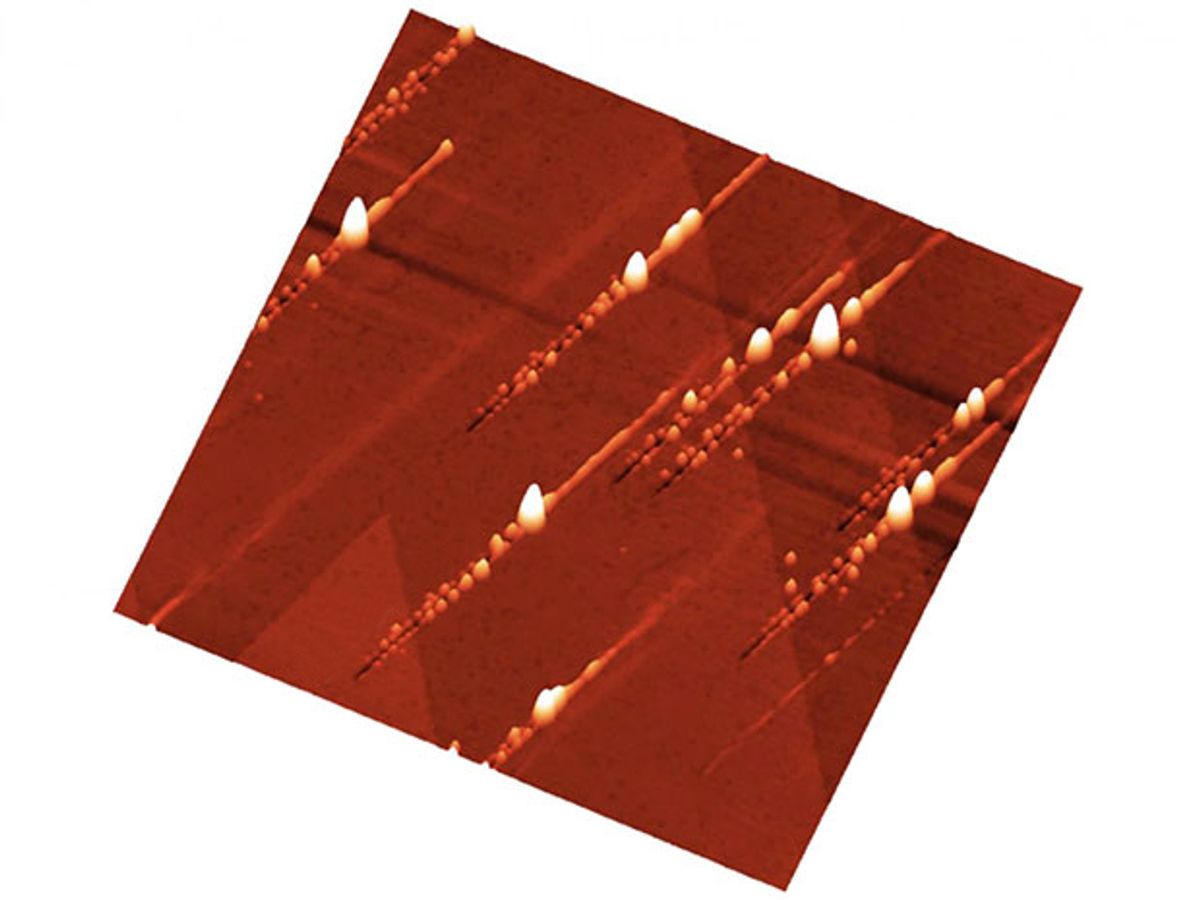It turns out if you want to know what happens to semiconductors under ion bombardment, you might do well to look at the effects of meteorites when they impact Earth. At least that’s what a team of researchers at Technische Universität Wien (Technical University of Vienna, TU Wien) discovered when they peered into the crystal surface of a semiconductor with an atomic force microscope (AFM).
In experiments described in the Journal of Physics: CondensedMatter, the researchers bombarded the surface of calcium fluoride with both xenon and lead ions. The AFM revealed the tracks left behind by ions hitting the calcium fluoride surface. Each ion strike creates an initial impact site and a trench several hundred nanometers long that is bordered by a series of nanohillocks on both sides. At the end of trench is a large single hillock created as the ion penetrates into deeper layers of the crystal.
“When we take a look at the crystal surface with an atomic force microscope, we can clearly see the similarities between ion impacts and meteorite impacts,” says Elisabeth Gruber, a PhD-student who worked on the research, in a press release. “At first the projectile, scratching across the surface at a grazing angle, digs a trench into the crystal surface, which can be hundreds of nanometers long. Extensive ridges appear on either side of the trench, consisting of tiny structures called nanohillocks.”
While these observations sound as though that’s what we should expect, matter on the nanoscale behaves far differently than it does on the macroscale. There are all sorts of forces at work on the nanoscale that made the outcome from ion bombardment far from certain, like quantum effects that occur when atoms exchange energy.
“When the high-energy ions interact with crystal surfaces – calcium fluoride, in our case – many different physical effects have to be taken into account”, said Friedrich Aumayr, whose lab led the research. “Electrons can change their energy state, they can exchange energy with atoms around them and excite vibrations in the crystal lattice, the so-called phonons. We have to carefully consider all these effects when we want to understand how the nanostructures on the crystal surface are created.”
It was not enough to simply observe the effects of the ion bombardment, but the Vienna researchers needed to understand the mechanism by which these effects occurred. To do this, they joined forces with researchers from Germany to develop computer models that helped explain the mechanical forces that led to these results.
“That way we can determine, how much different parts of the crystal surface are heated up”, said Gruber. “There are regions which become so hot that the material melts, at certain points it can even evaporate. When we know how large these regions are, we can predict very accurately what the nanostructures on the crystal surface will look like.”
With a better understanding of what happens to semiconductor crystals during an ion bombardment and model for the mechanisms at work, the researchers believe that they have a framework for designing and fabricating nanostructures that can withstand these ion bombardments.
Aumayr added: “We want our electronics to work, even under extreme conditions, for instance in a satellite which is exposed to cosmic radiation.”
Dexter Johnson is a contributing editor at IEEE Spectrum, with a focus on nanotechnology.



